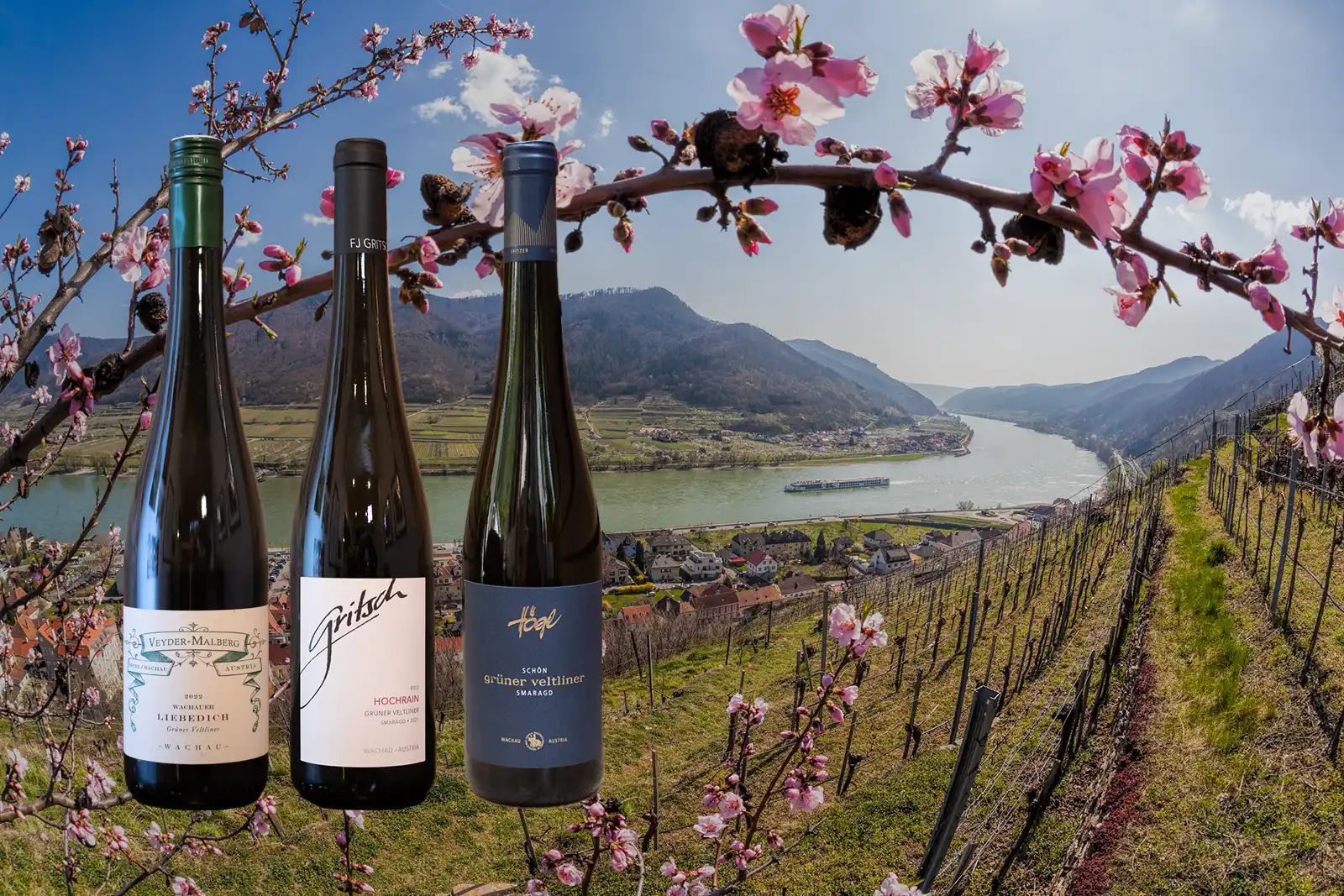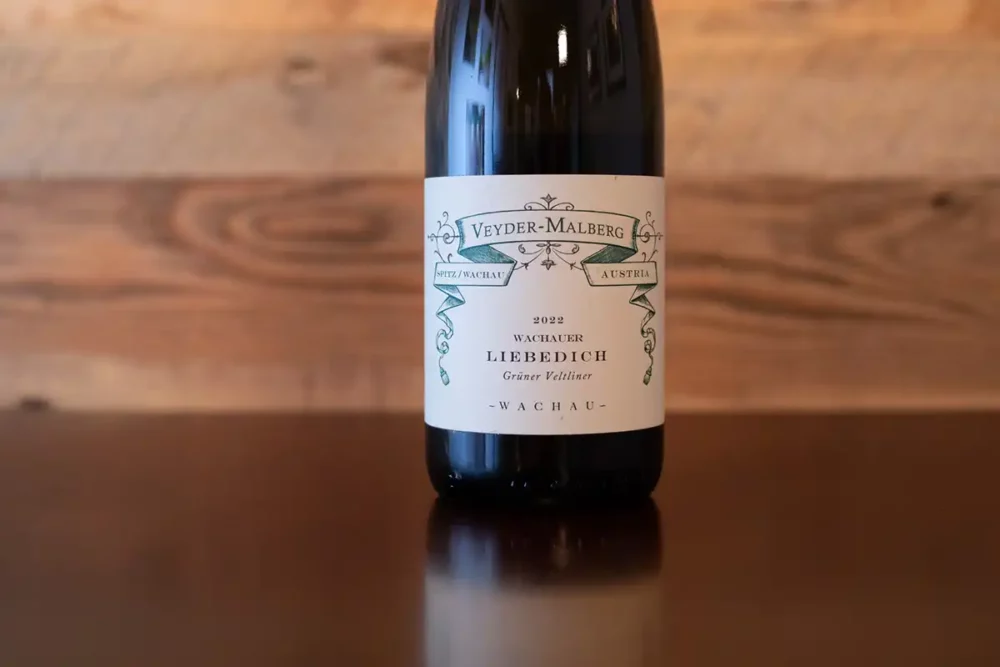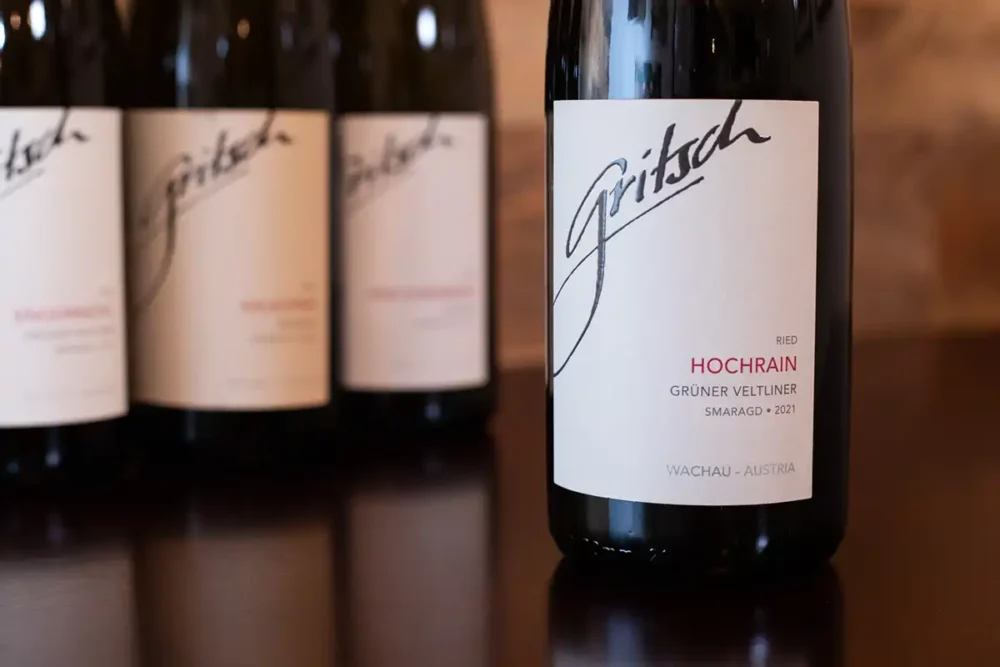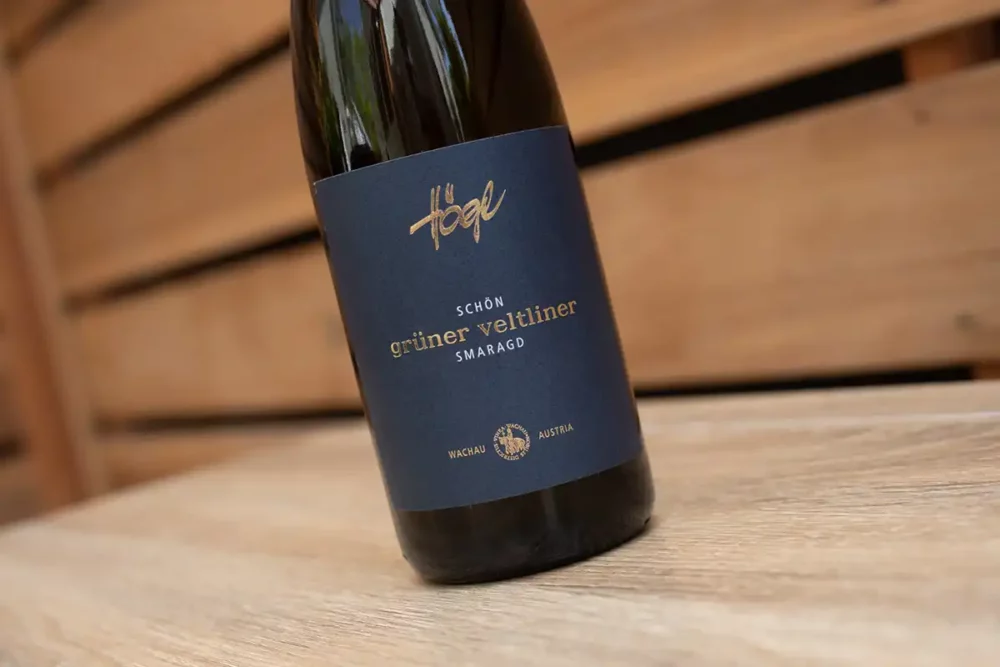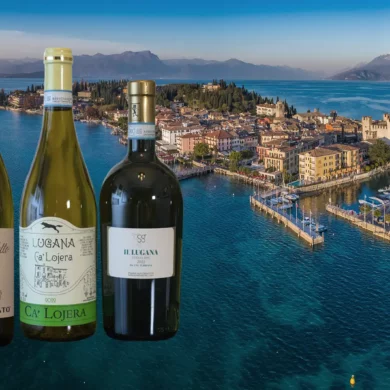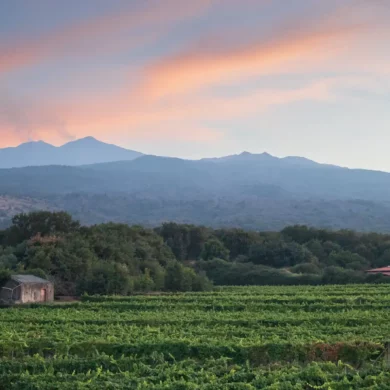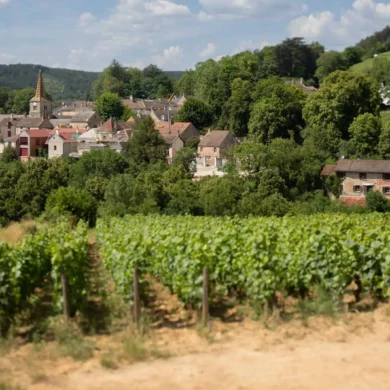Wachau Grüner Veltliner combines the terroir-focus of Austria’s small but mighty Wachau DAC region with the nation’s signature white wine grape. These are vibrant, textural and (sometimes) rich white wines that usually carry the taster forward on a wave of refreshing acidity.
If you have never tasted a Grüner Veltliner from the Wachau — or you are just giving this wine your first serious look as a wine student — this First-Taste Guide by wine writer Kevin Day will get you started.
Welcome to the Wachau
About an hour’s drive upstream of Vienna, the Danube River passes through a corridor of impossible beauty. Colorful villages hug the shore, and vineyards cling to the slopes and cliffs above. For the many tourists on the cruise boats that ply the Danube from Budapest to Passau, the Wachau is the scenic highlight. In fact, most of the marketing surrounding the popular route has the wine village of Dürnstein — with its pastel blue-trimmed church — as the cover image.
So what comes from those impossible vineyards that etch the landscape? Only some of Austria’s most famous white wines, that’s what.
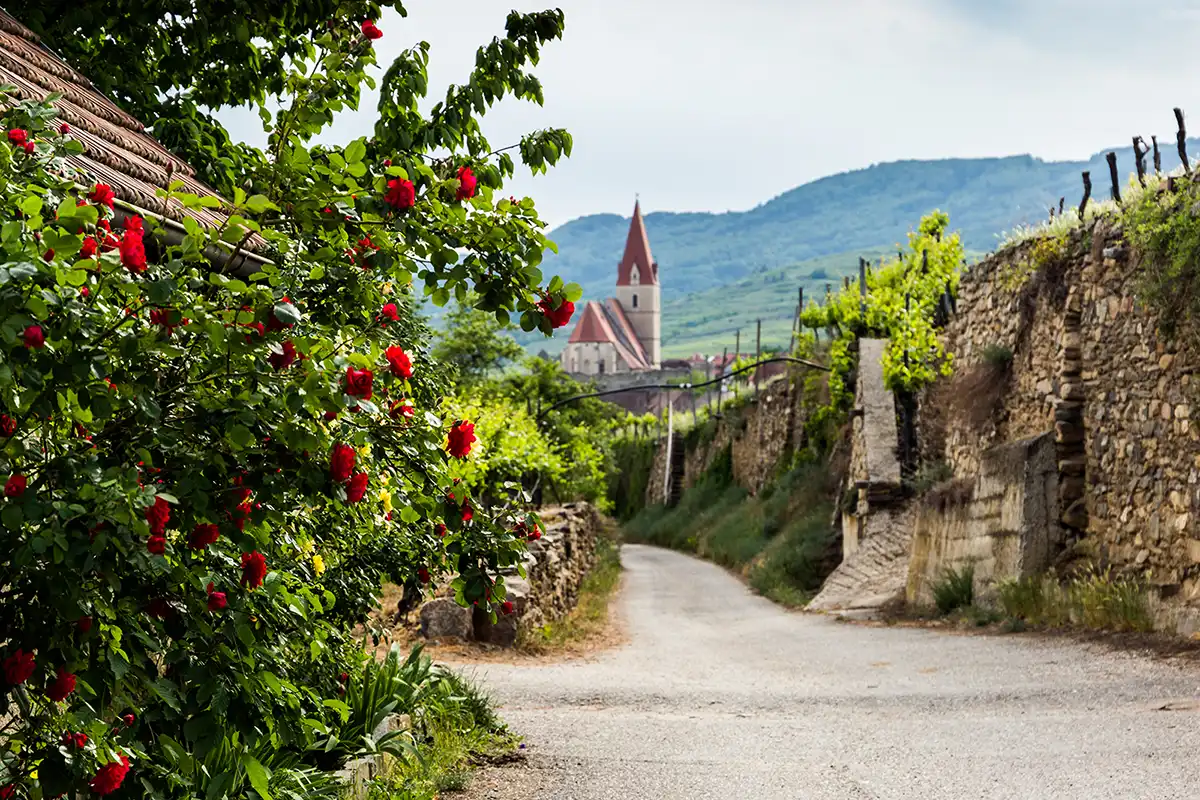
As we increasingly look to Austria for extraordinary wines, it seemed like a natural, editorial starting point to take a curious-but-critical “beginner’s guide” look at the Wachau on two fronts: Riesling, which we will address later this year, and Grüner Veltliner, the subject of this article.
Lending insight to this piece is winemaker Franz-Josef Gritsch of the eponymous estate, as well as his partner, Maria Pieler, whom I reached via video conference a few weeks ago after selecting their wine for this First-Taste Guide.
Gritsch is the seventh generation in his family to make wines in the Wachau, and his estate has some of the broadest reach in terms of vineyard acreage. Let’s get started.
3 Reasons to Try Wachau Grüner Veltliner
- You Want an Introduction to Austrian Wine – With its arrow-straight lines of acidity and tendency towards intensity, Wachau Grüner Veltliner is a firm, nice-to-meet-you handshake from this compelling wine nation. See where the conversation goes.
- Now Know This: Wachau is About Power – The contours of the Wachau aid ripening and the soil only furthers concentration by encouraging roots to tunnel deep underground. Richness shows up in the Wachau in a way it often doesn’t elsewhere in Austria, particularly with Grüner Veltliner.
- But It Is Also About Freshness – Power without finesse is boring, and the Wachau finds its balance from cooler air currents that penetrate the valley and counter those exceptional ripening conditions. This lends us a Grüner Veltliner of considerable depth and poise, unlike any other.
What is the Wachau DAC?
Located in the Niederösterreich region of Austria, the Wachau DAC is an appellation mostly devoted to white wines, a vast majority of which are Grüner Veltliner (64% of vineyard plantings). At 18%, Riesling is a distant second in terms of vineyard acreage. That said, Riesling produces the more famous and more celebrated wine.
Grüner Veltliner and Riesling are the only grapes permitted as the top level Riedenweine, or sanctioned cru wines. (If you see a wine with ried on the label, you’ll know it has a single-vineyard origin.) A less specific “village level” wine — known as Ortsweine — also applies to Riesling and Grüner Veltliner, as well as wines from Pinot Blanc, Pinot Gris, Chardonnay, Neuberger, Muskateller, Sauvignon Blanc and Gewürztraminer, although these latter grapes are incredibly rare and you’re not likely to find them outside the region.
In both Riedeweine and Ortsweine levels, there can be no perceptible aroma or flavor from oak.
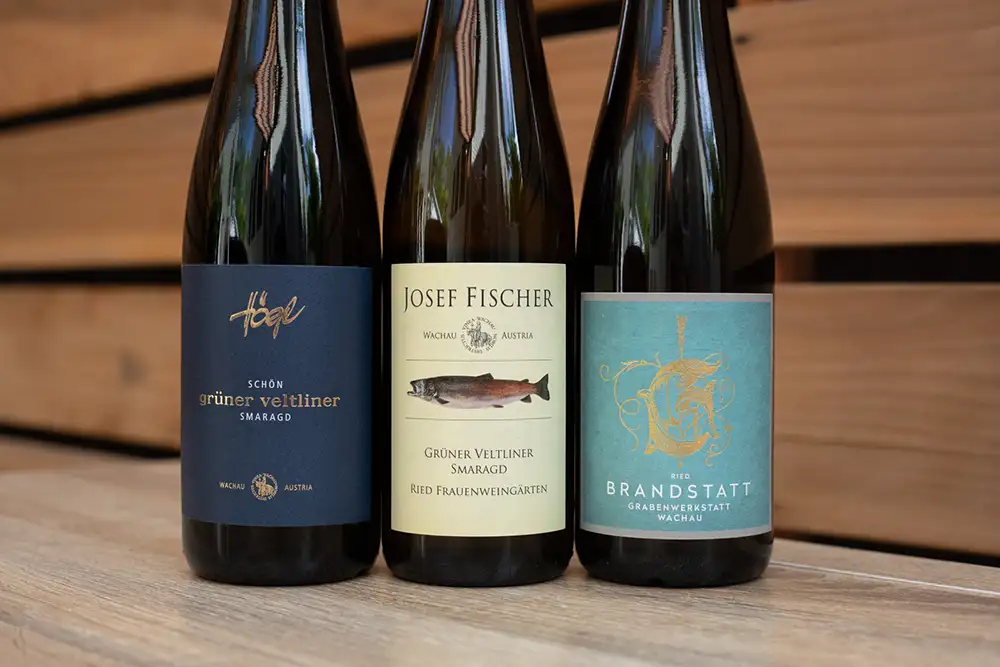
Care for another wrinkle to the terminology? The Vinea Wachau — a grower’s association that works within the Wachau DAC — has three levels of wine based on alcohol content. For member wineries producing wines above 12.5% ABV, they can label them as Smaragd, a reference to a green lizard often found scampering amidst the terraces. Federspiel applies to wines between 11.5% and 12.5% ABV, while Steinfeder applies to those below 11.5%.
Of course, alcohol levels must be printed on the label anyway, so these terms might seem obsolete. We’ll get to the debate on its utility in a moment, but at least now you know what those terms mean if you encounter them.
A Brief History of the Wachau Wine Industry
“Most of the stone terraces were built starting in the year 1000 through 1200, 1300 A.D.”
Franz-Josef Gritsch
Winemaker, Gritsch
From a historical perspective, FJ Gritsch told me, the Wachau is among the oldest wine regions in Austria. Demand from monasteries in Germany, combined with a navigable river superhighway, made the valley geographically ideal for vine planting. However, from an ease-of-labor standpoint, it was less than ideal. Once the winegrowers discovered that the best sites were on the steeply pitched hillsides, they really got to work.
“Most of the stone terraces were built starting in the year 1000 through 1200, 1300 A.D.” Gritsch noted, describing the most unique historical attribute of the landscape — the 450 miles of rock walls that guard against erosion. Without them, viticulture would be confined to the lower slopes and Wachau’s prestige would be significantly less.
While these dry-stone terraces not only make the slopes more level for viticulture, they nonetheless add to the costs of production — by some estimates, a four-fold increase in labor hours.
“In order to keep the stone terraces on-going here, we have three people working only on this,” Maria Pieler noted. These stone masons are so specialized, that keeping the tradition going is proving difficult, a fact that is often cited in similar places such as the Mosel River Valley in Germany and Italy’s Valtellina. “It’s getting worse and worse to find people who can do this kind of work, because it’s really just stone by stone without any kind concrete.”
Yet the terraces are a fixture of the landscape and the Wachau cannot go on without them. The walls reflect heat during the day, provide a habitat for insect and reptilian life, and even contribute to the storage of rainwater by slowing drainage. Because of these traits, the terms “terroir” in the Wachau has an additional element of humanity that cannot be treated separately.
About the Wachau and Its Grüner Veltliner Wines
The Wachau is part of a trio of Austrian DAC wine appellations that are not only adjacent to one another, but which produce the nation’s most famous white wines. Immediately to the east (and closer to Vienna), you will find the Kremstal DAC along the right and left bank of the Danube. North of Kremstal lies the Kamptal DAC.
Both Kremstal and Kamptal boast higher concentrations of loess soil, and their wines are known for being more delicate and subtle than the powerhouse wines often associated with the Wachau. The Kamptal and Kremstal are also more open to the great Pannonian Plain and its climatic influences, while the Wachau is largely sealed off in its narrow river valley.
Yet an enormous range of expressions can be found within the Wachau, and that journey of discovery begins with Grüner Veltliner.
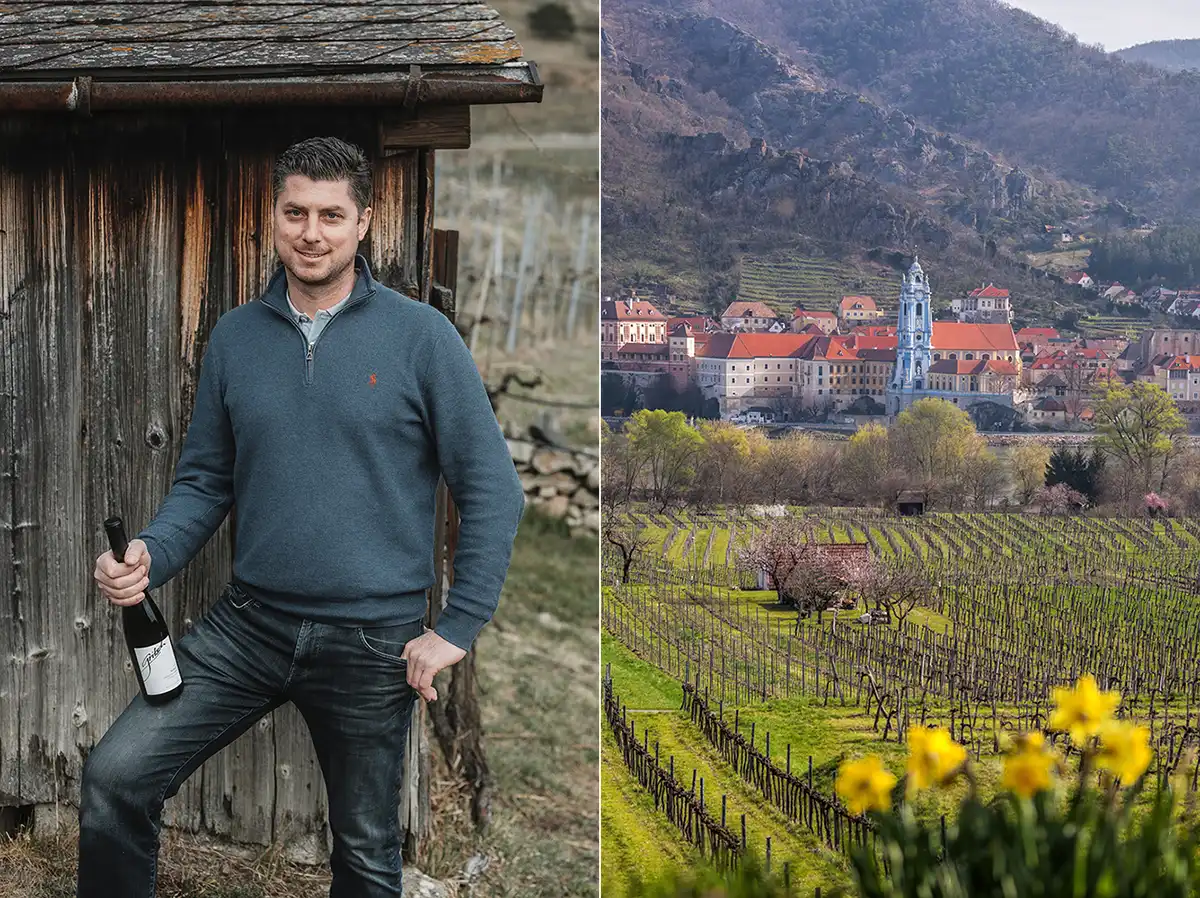
The Grape Variety
“Grüner Veltliner needs water, so we plant it more on the bottom of the vineyards, where it becomes more flat.”
Franz-Josef Gritsch
Grüner Veltliner is not typically a grape people spend a lot of time studying, but that’s because outside the Wachau — and to a lesser extend Kremstal and Kamptal — it isn’t particularly known for refinement. While it is believed to be an ancient grape — as well as an offspring of Traminer — Grüner Veltliner wasn’t fully identified and documented as a distinct, commercially viable variety until a mere hundred years ago. What was understood about Grüner Veltliner was its tendency for bountiful fruit. That usually means quantity comes before quality.
Indeed, while it provides white wines with a cheerful zippiness and a twist of spice, a great deal of “Grüner” is straightforward and simple.
But in the Wachau, where the terroir keeps yields naturally in check, Grüner Veltliner has permission to swing for the fences. That said, it will never rival Riesling for complexity or age-worthiness, and so in the Wachau it is typically planted on the lower slopes in loess soils, which are thick deposits of silty, windblown sediment from the last Ice Age. Riesling gets the premium real estate high on the rocky slopes, where gneiss-rich soils can foster a sense of minerality and where exposure to the sun can provide insane levels of phenolic ripening.
However, Gritsch notes, choosing where to plant Grüner Veltliner versus Riesling also depends largely on water. “We plant Riesling higher up in the single-vineyards up on the mountains. That’s because Riesling grows well without water. Grüner Veltliner needs water, so we plant it more on the bottom of the vineyards, where it becomes more flat.”
Because of this, Wachau Grüner Veltliner rarely has as much minerality as Wachau Riesling does. It is also a big reason why 64% of the vineyard surface is planted to the grape: it is simply easier to tend to on the lower slopes.
The Terroir
But soil and slope only account for part of the terroir picture.
Coming into this article, it wasn’t entirely clear in my head what the signature of Wachau Grüner Veltliner was, beyond a general sense of quality and heightened intensity. As I tasted several of these wines side-by-side, I was mostly struck by the enormous variety. Some wines were rich, others were crisp. Some were a duet of harmonizing voices, others were more like a quartet. And considering the production code’s insistence on “no noticeable oak” in the wine, the answer does not seem to lie in stylistic differences at each winery. Rather, this was mostly terroir in action.
Indeed, the Wachau’s climate is a wonderfully complicated system, according to Franz-Josef Gritsch.
“We have very cold nights in summer,” he said when I asked him about the nature of Wachau Grüner Veltliner’s acidity. “Especially in the Spitzer Graben, the coldest part of the Wachau.”
Like the combes along the Côte d’Or of Burgundy, the Spitzer Graben is a side valley to the Danube located right in the middle of the appellation. Like an open window in a house, it allows cooler air currents to circulate into the valley from the high-elevation forests above. This is essential for the development of acidity and aromatic compounds in the grape skins.
But there is a foil to the Spitzer Graben’s breath of cold air.
“In Loiben, or the east part of Wachau, you have a little bit [of warmth] from the Pannonian climate,” Gritsch added, referring to the massive Pannonian Basin that covers much of eastern Austria and Western Hungary and Slovakia. “So the Grüner Veltliner from there can have more fat and creaminess and the acidity is lower.”
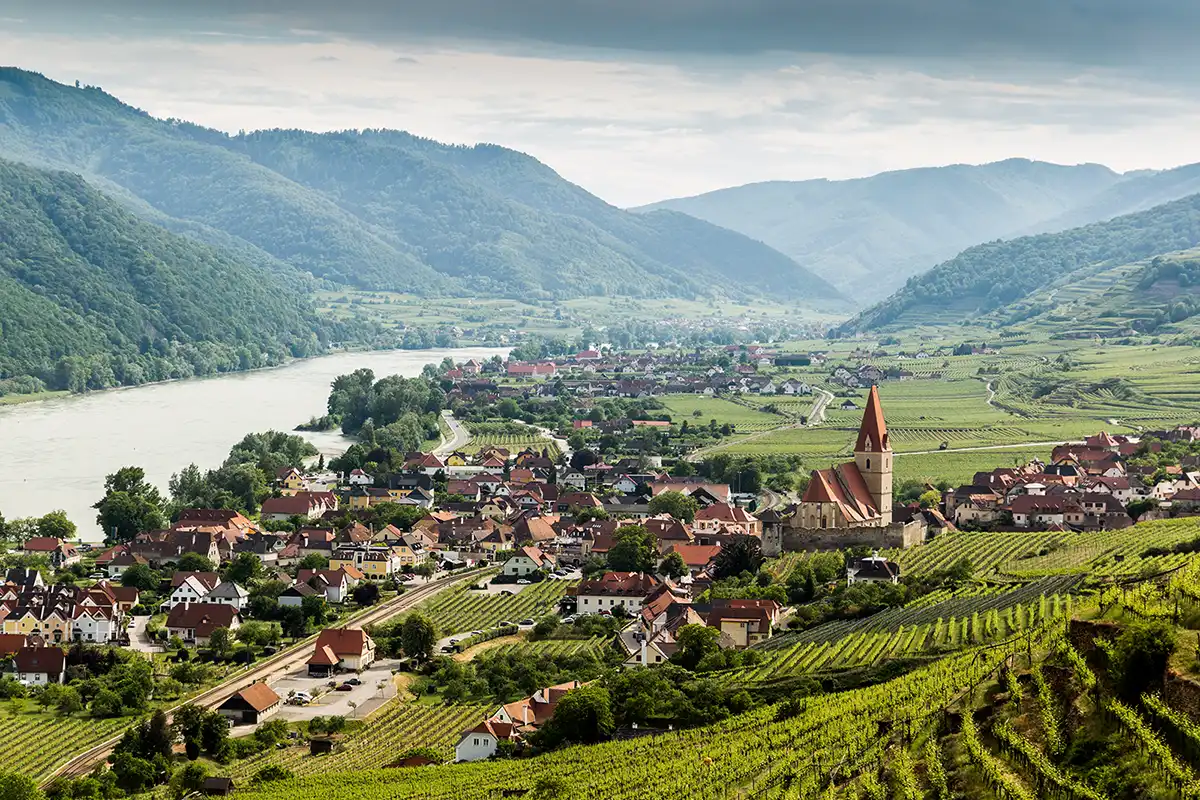
With grape variety as the first dimension, and soil as the second, its the proximity to these opposing air currents — cool and warm — that make a vineyard’s terroir in the Wachau three dimensional. A fourth dimension could be attributed to the river, which produces enough humidity to modulate the diurnal temperatures. Furthermore, thanks to this humidity, botrytis can develop in certain vineyards. This is especially true with Grüner Veltliner because those vineyards are closer to the river, but also because the grape has thinner skins, making it more prone.
“We do not use noble rot for our single-vineyard wines,” Gritsch made clear. “Those are about a clear sense of fruit and a long life in the cellar. It is not a good thing for our winery [if noble rot develops] but in those years we do make a sweet wine [from the grapes affected].”
Categories of Wachau Grüner Veltliner: Helpful or Not?
Remember earlier when we talked about the three levels of wine — Smaragd, Federspiel and Steinfeder — as defined by alcohol level? It begs the question: should a consumer evaluate their purchase based on these designations? More to the point, is this suppose to be a “quality pyramid” or merely a weight class?
“All the wine regions in Austria now use the DAC system … so when we export, [we want to] have the same system for all regions.”
Franz-Josef Gritsch
In their excellent book, The Sommeliers Atlas of Taste, Rajat Parr MS and writer Jordan McKay point out that Vinea Wachau’s system has inadvertently tied superior wines to higher alcohol. Naturally, the best vineyard sites ripen the most, and when you have ultra-ripe grapes, you eventually get more alcohol. Rather than developing a tiered cru system for their vineyards — where great vineyards are celebrated regardless of each vintage’s ABV outcome — the organization promoted a system that single-out potential power. Today, these categories are even called “brand names” on the Vinea Wachau site.
Some of the Wachau’s most notable wineries still participate in Vinea Wachau and label their wines with these terms. And there is a bit of historical pride tied to the names.
Others, such as Franz-Josef Gritsch and Peter Veyder-Malberg — coincidentally, featured below as my selections — have left on philosophical grounds since the Wachau DAC was enshrined in law in 2020.
Part of the issue, Maria Pieler says, is that the alcohol scale hasn’t shifted with climate change. What used to be a high alcohol level — such as 12.5%, earning Smaragd — is not difficult to achieve with the new weather trends. “So [the categories are] getting obsolete now,” she observed.
But that point aside, Franz-Josef Gritsch adds, the real issue is that “nobody in the [wine] world has a regulation for alcohol that says, ‘okay, more alcohol is a good wine, less alcohol is not a good wine.’ Plus, all the wine regions in Austria now use the DAC system. And so when we export, [we want to] have the same system for all regions, for that is the best way to bring Austrian wine to international markets.”
Proponents of the system will note that the “brand names” are exactly that: vanity names tied to historic styles of wine that are important to the tapestry of taste coming from the Wachau. For you, as a curious consumer, all you need to know is that interesting wines come from both sides of the divide.
Pardon the Brief Interlude …
Are you passionate about the wines of Italy, France and Austria? Eager to advance your wine education through stories, interviews and photography rather than aroma wheels and tasting grids? Subscribe to Opening a Bottle and unlock our educational videos, live wine classes, in-depth reviews and curated lists of the best producers … all for less than two bottles of Smaragd Grüner Veltliner.
Your First Taste
As I tasted through the various Wachau Grüner Veltliner I procured, selecting the right ones for a “first taste suggestion” proved tricky. Certainly, the single-vineyard Riedenweine present the most exciting opportunity, but it is always good to have a broader introduction first. So I have highlighted below an introductory blend of multiple vineyards from Veyder-Malberg, a single-vineyard from Franz-Josef Gritsch, and an aged Grüner Veltliner from Högl.
2022 Veyder-Malberg “Liebedich” Wachau Grüner Veltliner
This wine comes from one of Wachau’s most esteemed producers, Peter Veyder-Malberg, who as a Spitzer Graben specialist, has built a reputation for sleek, chiseled, acidity-forward wines of great elegance. The 2022 “Liebedich” Grüner Veltliner (★★★★ 1/2) perfectly showcases the two-sided coin of Wachau Grüner Veltliner: on one side, the bright and active lime-pith sensations of Grüner Veltliner, on the other, the Wachau’s intensity. But this wine never skews to the richer side of things, and never loses sight of its finesse. A blend of vineyard plots from around the region, its aim is to give you a teaser of the region’s amalgam identity and Veyder-Malberg’s style. Mission accomplished.
A great first-taste if you can procure a bottle. Veyder-Malberg wines are highly sought-after in the United States.
New to Opening a Bottle? Learn more about these wine icons and why we use them.
2021 Gritsch Ried Hochrain Wachau Grüner Veltliner Smaragd
The Hochrain vineyard lies just east of the Spitzer Graben on the north side of the river, but it faces away to the southeast like a hunched shoulder guarding against that chill. This is an ideal site to experience that climatic tension between the Spitzer Graben’s cool air and the warmth from Loiben.
“Turn the speakers up,” I wrote in my notes while tasting the 2021 Ried Hochrain (★★★★ 3/4). “In this case, the speakers can handle it.” Of course, louder is not always better, but when the wine is this balanced — and when that power is the calling card of Wachau terroir — you get a very good sense for what these wines are all about.
Ried Hochrain is explosive on the nose, with vibrant green citrus notes complemented by soft herbs and expansive tropical fruit. This is an assertive and confident wine, yet its alcohol is kept in balance and it never feels overbearing. And that’s what we turn to the Wachau for, I think: gentle power and endless persistence. Ried Hochrain is a superb first encounter for those of you new to the Wachau.
Note that in future vintages, the Smaragd designation will be dropped from the label, as discussed above.
2017 Högl Ried Schön Wachau Grüner Veltliner Smaragd
Coming from a vineyard simply called “beautiful,” (Ried Schön) this moderately aged 2017 Wachau Grüner Veltliner (★★★★ 1/2) shows a wine in fascinating transition. The fruity-spicy aromas are hard to ignore. It’s like a dose of peach skin, blue flowers and cinnamon stick. On the palate, this is a rich and potent white wine, living up to the Smaragd designation with superb persistence.
The Ried Schön is located in the heart of the Spitzer Graben and is comprised of 57 terraces. Because of the persistent cool air and conditions, grapes from the old vines are sometimes harvested as late as November, even December in certain cases according to Högl’s website. Yet they are able to still achieve incredible concentration.
Note: Two of the three wines were provided as samples by their respective importers. The Veyder-Malberg was purchased with funds raised by subscriptions. Learn how you can support this independent wine publication.
